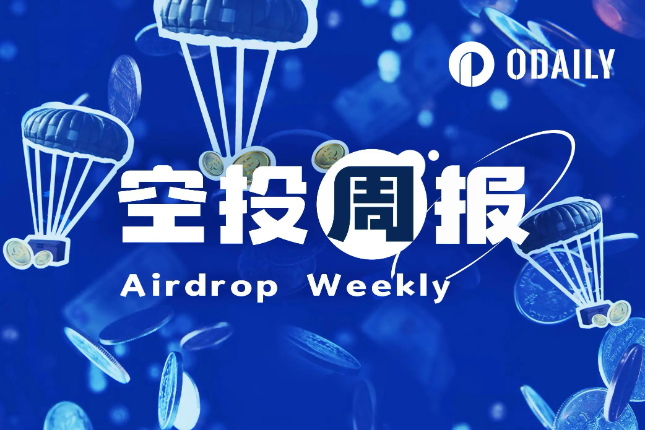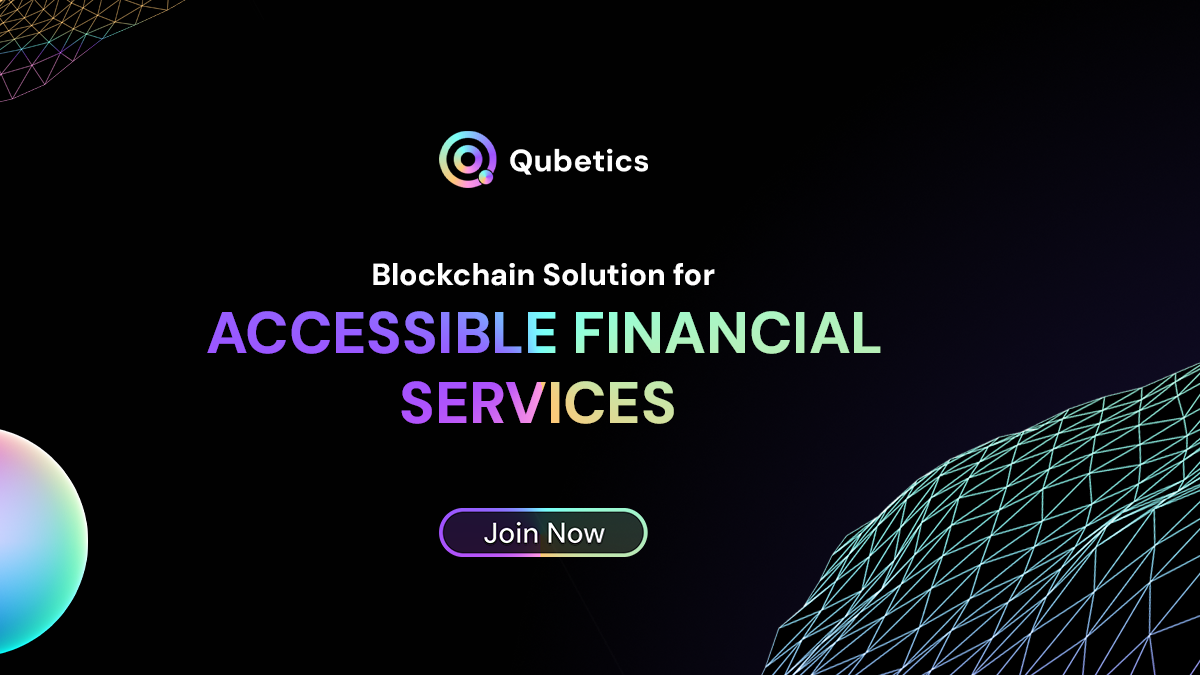Latest DePIN News

a year ago
The Rise of Decentralized Physical Infrastructure Networks in Crypto
Decentralized Physical Infrastructure Network (DePIN) is emerging as a significant trend in the cryptocurrency space, characterized by its integration of blockchain technology with the Internet of Things (IoT). DePIN projects aim to connect and manage physical devices that gather and share data, such as wireless networks and energy grids. However, a critical question arises: to what extent do these projects genuinely utilize blockchain networks? The challenge lies in the sheer volume of data generated by these networks, which necessitates high-throughput blockchain solutions. Notably, Helium, a prominent DePIN project, transitioned from its own blockchain to Solana in April 2023 to leverage its speed, yet even Solana struggles to meet the real-time computational demands of DePIN applications.
Shuyao Kong, co-founder of the upcoming MegaETH, highlights that existing DePIN projects are not entirely on-chain, indicating a reliance on hybrid structures that combine off-chain computations with on-chain data recording. This approach raises concerns about whether these projects are merely using blockchain as a marketing strategy to attract investments. The inefficiencies and costs associated with fully on-chain applications lead many projects to adopt a model where off-chain computations are conducted, and only the results are recorded on-chain. This hybrid model allows for better scalability and performance while still leveraging the trustless nature of blockchain for coordination among numerous devices.
As the DePIN landscape evolves, experts like Zhe Wang and Jeremy Frank suggest that while current blockchain architectures cannot fully support the real-time demands of DePIN projects, there is potential for growth. Future developments may focus on specialized architectures tailored to the unique computational requirements of various DePIN applications. This could lead to the creation of modular execution environments optimized for tasks such as real-time biometric processing or large-scale data management. Ultimately, the success of DePIN will hinge on striking a balance between on-chain and off-chain processes, ensuring both efficiency and reliability in decentralized infrastructure management.

a year ago
Phantom Wallet Faces Downtime Amid GRASS Token Airdrop Surge
On October 28, the Phantom wallet provider experienced significant downtime lasting nearly three hours, coinciding with a surge in demand for the GRASS token airdrop. Users reported issues such as missing balances and transaction failures on social media platforms. The downtime began at 1:36 PM UTC and was resolved by 4:20 PM UTC, marking the second service interruption for Phantom within the month. Earlier in October, a brief 8-minute outage was recorded on the 3rd. In response to the incident, Phantom's team assured users that they would actively monitor the situation and implement measures to prevent future occurrences.
The GRASS tokens are part of a decentralized physical infrastructure network known as Grass, which operates on the Solana blockchain. This network incentivizes users by rewarding them for lending unused internet bandwidth, which is then utilized to enhance artificial intelligence models. The first airdrop of GRASS tokens will distribute 100 million tokens, accounting for 10% of the total supply. Following the airdrop's launch, the price of GRASS experienced volatility, initially dropping by 28% to $0.65 before recovering slightly to $0.71 at the time of reporting.
Despite the issues faced by Phantom, the Solana network itself remained fully operational throughout the downtime. Data from Solana Status indicated that the network maintained total uptime over the past 90 days. The timing of Phantom's service disruption, just minutes after the GRASS token claim went live, has led to speculation about a correlation between the two events, as users rushed to claim their rewards. This incident highlights the challenges faced by wallet providers during high-demand events in the cryptocurrency space.

a year ago
CUDOS and ASI Alliance Complete Successful Token and Blockchain Merger
Today marks a significant milestone in the blockchain space as CUDOS and the Artificial Superintelligence (ASI) Alliance have successfully completed their token and blockchain merger. The CUDOS mainnet has officially halted at block height 12,385,627, meaning it will no longer produce blocks. In this process, all data from the final state of CUDOS was exported, and the Fetch.ai (ASI) chain underwent a software upgrade to incorporate all CUDOS data, facilitating the migration of balances. Notably, all CUDOS token holders and delegators have successfully transitioned, along with 30 validators, bringing the total validator count on Fetch.ai’s mainnet to 91.
With the merger finalized, CUDOS holders can now view their new $FET tokens on the Fetch.ai (ASI) mainnet through platforms like Mintscan. To verify the correct amount in their vesting schedule, users can check an active CUDOS explorer, where their $FET balance should reflect the amount divided by 118.344. For further assistance or inquiries, stakeholders are encouraged to reach out through the official channels of CUDOS or ASI, including their respective Discord servers, especially for questions related to the merger and balance conversions.
The collaboration between CUDOS and the ASI Alliance has been ongoing, and this merger paves the way for numerous exciting updates that are set to be announced soon. Both teams are committed to keeping the community informed, so stakeholders should stay tuned for upcoming developments as they continue to enhance their offerings in the blockchain ecosystem.

a year ago
ARC and Stratos Partner to Enhance Decentralized AI Infrastructure
In a groundbreaking development, ARC has announced a strategic partnership with Stratos, aiming to revolutionize the integration of artificial intelligence (AI) within decentralized infrastructures. ARC, known for its advanced AI platform, focuses on enhancing efficiency and precision across various applications, including AI-driven solutions and Web3 security. The collaboration promises to leverage Stratos' decentralized storage network, which is designed to provide a robust and privacy-centric foundation for ARC's AI capabilities. This synergy is expected to elevate the standards of decentralized applications by combining cutting-edge technology with a secure infrastructure.
The partnership highlights the adaptability of ARC's AI, which can evolve according to user requirements, offering features such as Continual Prompting and comprehensive Code Reviewing. By utilizing Stratos' decentralized framework, ARC aims to ensure that its AI solutions not only meet but exceed the performance of traditional centralized systems. This alignment of advanced AI with decentralized technology is set to create a more efficient and secure environment for developers and users alike, fostering innovation in the Web3 space.
As the landscape of technology continues to evolve, this partnership between ARC and Stratos signifies a pivotal moment for decentralized AI and Web3 applications. By providing builders with a high-performance, trustless infrastructure, the collaboration is poised to set a new benchmark in the industry. Together, ARC and Stratos are committed to driving the next generation of decentralized applications, ensuring that they are equipped with the necessary tools to thrive in a rapidly changing digital ecosystem.

a year ago
$LIFEDOG: A New Era for Meme Coins on Ethereum
On October 28th, 2024, the new Ethereum-based meme coin, $LIFEDOG, has officially launched on Uniswap, providing an innovative staking and reward ecosystem for meme coin enthusiasts. This project aims to differentiate itself in the saturated crypto market by leveraging the experiences of previous meme coins and a skilled blockchain team. $LIFEDOG allows users to purchase tokens using Ether (ETH) and offers unique staking options that enable holders to earn potential returns by staking $LIFEDOG alone or in combination with other inactive meme coins, marking a fresh approach in the meme coin landscape.
Reflecting on the evolution of dog-themed cryptocurrencies, $LIFEDOG emerges a decade after Dogecoin's debut, which has inspired a plethora of similar assets like Shiba Inu and FLOKI. The development team behind $LIFEDOG intends to learn from the market's historical cycles, aiming to create a stable and rewarding ecosystem for its users. The project features a two-tiered staking program: staking $LIFEDOG alone offers an annual percentage rate (APR) of 320%, while pairing it with legacy meme coins boosts the APR to 555%. This model is designed to enhance liquidity and profit opportunities for participants, with 75% of the total $LIFEDOG supply allocated for decentralized exchange liquidity.
As the $LIFEDOG project approaches its full-scale launch, it has set a maximum supply cap of 5,555,555,555 tokens to ensure accessibility for meme coin holders. Additionally, 4% of the token supply is earmarked for charitable contributions to dog welfare initiatives, reflecting the community's commitment to animal care. With its ambitious goals and innovative features, $LIFEDOG positions itself as a potential leader in the meme coin market, promising to revive interest and engagement among crypto enthusiasts and skeptics alike.

a year ago
Decentralized Identity: Paving the Way for Web3 Adoption
The evolution from Web2 to Web3 represents a significant shift in how personal data and digital identities are managed. In the traditional Web2 framework, centralized organizations maintain control over user data, often leading to concerns about privacy and data ownership. With over 5.17 billion active social media accounts, the amount of information controlled by these entities is staggering. Web3 aims to disrupt this model by introducing decentralized identity (DID) systems, allowing individuals to regain control over their personal data and online identities. This decentralized approach ensures that users are the sole owners of their credentials, enabling them to verify their digital identities without relying on centralized authorities.
DID systems offer numerous advantages that can facilitate the adoption of Web3 technologies. Firstly, they empower users by granting them full control over their personal data, thereby eliminating the risk of unauthorized data sales by third-party companies. Additionally, DID simplifies the onboarding process for new users by allowing them to access various decentralized applications (dApps) using a single identity. This streamlined experience reduces barriers to entry and enhances user engagement with Web3 platforms. Moreover, the security features inherent in decentralized technologies provide robust protection against malicious attacks, ensuring that users' private identities remain secure.
As the demand for privacy and data ownership grows, the practical applications of DID become increasingly relevant. For instance, integrating DID into existing Web2 platforms can provide users with password-free logins and facilitate decentralized Know Your Customer (KYC) processes. However, challenges remain, including the need for scalable systems that are user-friendly for individuals unfamiliar with blockchain technology. By addressing these challenges and promoting the use of DID, the Web3 ecosystem can accelerate its adoption, ultimately leading to a digital landscape where users have greater control over their identities and personal data.

a year ago
Upcoming Airdrops and Funding Rounds in Blockchain Projects
In the latest developments in the blockchain space, several projects have announced airdrops and funding rounds that are set to take place from October 21 to October 27. One of the highlights is Ethereum L2 Scroll, which has opened its first airdrop application, allocating 7% of its total SCR supply. This airdrop targets community participants, ecosystem projects, industry contributors, and global community organizers. Scroll has successfully raised over $80 million in funding through various rounds, with significant contributions from Polychain and Bain Capital Crypto, among others.
Another noteworthy project is Grass, a Depin initiative on Solana that integrates AI technology. Grass has announced its Airdrop One, distributing 100 million GRASS tokens, representing 10% of its total supply. The allocation is designed to reward users who have earned Grass points and those who hold specific NFTs. Grass has raised over $4.5 million in funding, with its latest round led by Polychain Capital. The airdrop applications for Grass will open on October 28, 2024, creating excitement among its user base.
Additionally, Kelp DAO, a re-staking protocol based on EigenLayer, has opened airdrop applications for SCR tokens. The project raised $9 million in a private funding round earlier this year. Jupiter, a DEX aggregator, has also launched its Active Staking Rewards, distributing JUP and CLOUD tokens to active voters. The airdrop landscape is further enriched by projects like ALIENX and Ordzaar, which are also rolling out their airdrop initiatives. As these projects continue to innovate and engage their communities, the upcoming weeks promise to be significant for blockchain enthusiasts and investors alike.

a year ago
Emerging Blockchain Solutions: Qubetics Joins Established Giants
The blockchain domain is ever-evolving, with established giants and innovative newcomers competing to deliver scalable, secure, and efficient solutions. In this competitive space, networks like Monero, Bittensor, and Tezos have each carved unique positions, addressing specific challenges and enhancing blockchain utility. A fresh contender, the Qubetics $TICS, has recently entered the arena, offering an ambitious vision of interoperable and autonomous blockchain. Here’s a look at what sets these networks apart and why they could be poised for major growth.
Qubetics’ standout offerings include QubeQode IDE, a development environment with drag-and-drop capabilities that make creating blockchain apps easy, even for users with limited coding skills. This integrated development environment reflects Qubetics’ commitment to lowering barriers in blockchain development. The network also leverages AI-driven tools to streamline the coding and deployment process, allowing developers to build applications quickly and efficiently. In Phase 5 of its presale, Qubetics has raised over $1.4 million, with $TICS tokens priced at an attractive $0.015972. Over 140 million tokens have already been sold, and with prices rising 10% in the next phase, early investors have a narrow window to join this revolutionary project.
Each of these projects—Monero, Bittensor, Tezos, and Qubetics—addresses unique aspects of blockchain functionality. Monero remains a leader in privacy-focused transactions, Bittensor decentralizes AI development, and Tezos is a resilient, self-amending blockchain. However, Qubetics’ focus on blockchain development places it at the forefront of a new wave of blockchain solutions. As blockchain technology advances, these platforms collectively contribute to a future rich with possibilities for decentralized applications and digital assets. Qubetics, in particular, offers a rare chance for early investment with life-changing potential.

a year ago
Bitcoin ETFs Near 1M BTC as Market Developments Unfold
In recent developments within the cryptocurrency market, Bitcoin Exchange-Traded Funds (ETFs) have reached a significant milestone, nearing 1 million BTC under management. This surge has seen BTC ETFs gain an impressive $188 million, while Ethereum ETFs have also seen a modest increase of $2 million. Meanwhile, Tesla's stock has soared, reflecting a growing interest in cryptocurrencies among traditional investors. Additionally, Microsoft is set to vote on a potential investment in Bitcoin, although the board has expressed opposition to the move, indicating a cautious approach towards crypto investments in corporate governance.
On the regulatory front, Pennsylvania has passed a bill aimed at protecting crypto rights, signaling a positive shift for the industry in the state. However, concerns have arisen as reports suggest that a US crypto wallet may have been exploited, highlighting the ongoing security challenges within the sector. In terms of innovation, Kraken is preparing to launch its own Ethereum Layer 2 solution, which could enhance transaction speeds and reduce costs for users. Furthermore, Toly has announced that AI will leverage crypto rails to manage various projects, showcasing the intersection of technology and finance.
In other notable news, Uniswap has launched a bridging service connecting nine different chains, facilitating smoother cross-chain transactions. Ankr has integrated the TON blockchain into its Web3 API, expanding its service offerings. Meanwhile, a Binance executive has departed from Nigeria, reflecting the challenges faced by crypto exchanges in navigating local regulations. Lastly, the city of Lugano has unveiled a statue of Satoshi Nakamoto, celebrating the legacy of the Bitcoin creator and the impact of cryptocurrencies on the global financial landscape.

a year ago
Emerging Cryptocurrency Projects with Life-Changing Potential
In the rapidly evolving world of cryptocurrencies, identifying projects with real potential can be daunting. However, several projects are emerging as leaders by addressing significant financial challenges. Qubetics ($TICS) is at the forefront, tackling the volatility that has hindered institutional adoption. By utilizing a smart contract-powered token management system, Qubetics ensures price stability, making it an attractive option for financial institutions. The ongoing presale, currently in Phase 5, has already raised over $1.4 million, with token prices set to increase weekly. Analysts predict that if $TICS reaches $10 post-launch, investors could see an astonishing ROI of 62,500%, highlighting the immense potential for early adopters.
Another noteworthy project is Arbitrum, which enhances Ethereum's scalability through its Layer 2 solution. By offloading transactions from the main Ethereum chain, Arbitrum allows for faster and cheaper transactions without sacrificing security. This scalability is crucial as high gas fees continue to plague Ethereum, and Arbitrum's seamless integration empowers developers to deploy decentralized applications efficiently. As the DeFi landscape grows, Arbitrum's role in improving user experience and transaction efficiency positions it as a vital player in the ecosystem.
Stellar and Bittensor also stand out in the crypto space. Stellar focuses on revolutionizing global payments, enabling fast, low-cost cross-border transactions, particularly for the unbanked. Its decentralized network connects financial institutions, facilitating seamless money transfers. Meanwhile, Bittensor is decentralizing artificial intelligence, allowing participants to train and share AI models on a collaborative network. This innovative approach democratizes access to AI and accelerates development. Together, these projects—Qubetics, Arbitrum, Stellar, and Bittensor—offer unique solutions to modern financial challenges, making them worthy of attention in the ever-competitive crypto market.
Signup for latest DePIN news and updates